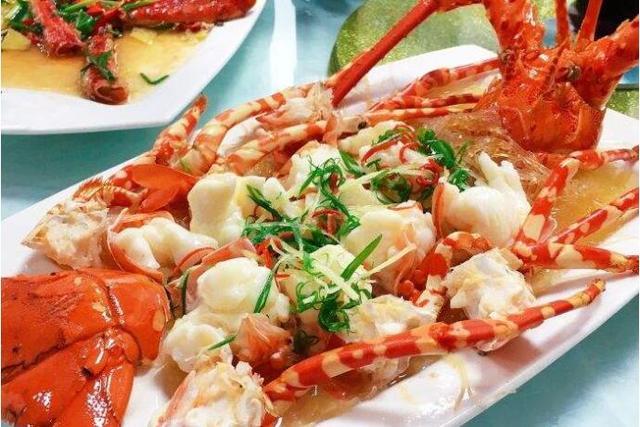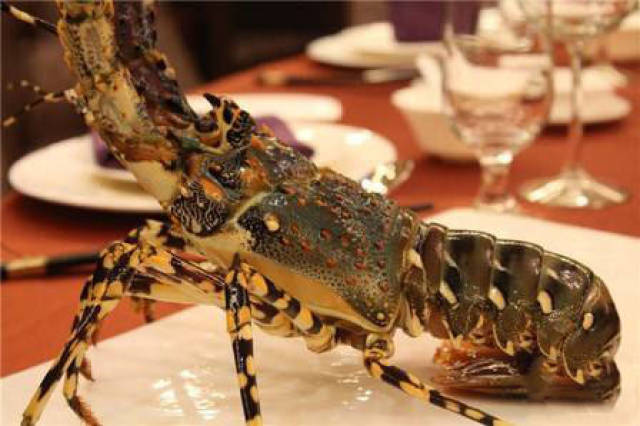Ripple lobster, this mouthwatering seafood delicacy, every aspect of its growth and cooking is full of unique charm and deep connotation. Next, we will explore more deeply its origin, living habits, appearance characteristics, growing environment, fishing season, practices, tastes and nutritional value, to take you to appreciate the full charm of this delicious seafood.
First, the origin
The ripple lobster is mainly found in the tropical and subtropical waters of Sri Lanka and South Asia, which provide unique growth conditions for the ripple lobster with its unique Marine environment. The seas off Sri Lanka and South Asia have extensive coral reefs and an abundance of seafloor rocks, providing ideal habitat for the ripple lobster. At the same time, the water in these areas is moderate in temperature and salinity, which provides a good environment for the growth of ripple lobster.
Second, life habits
The ripple lobster is a typical benthic creature, adept at using rock crevices and coral reefs on the seafloor as shelter. During the day, they usually hide in shelters to avoid predators. And at night, they’re active, looking for food. The ripple lobster has a wide diet, mainly feeding on small fish, shrimp, shellfish and Marine plants. With their keen sense of sight and smell, they can quickly spot and hunt prey. In addition, the ripple lobster also has a strong ability to adapt, can survive and thrive in different depths and sediments.
Third, appearance characteristics
The rippled lobster has a distinctive appearance, showing a bluish-green rippled shell, which is their most prominent identity. The shell is smooth and shiny, like a precious stone polished by age. The undulating lobster is large, fleshy and has a high ratio of meat to shell. Their head has a pair of large compound eyes and strong chelates, showing its unique charm.

Fourth, the growth environment
The undulating lobster is very strict about the environment it grows in. They need clear water, warm temperatures and seas rich in dissolved oxygen as habitats. In addition, the grit and rocks of the seafloor are also a key factor in their growth, providing them with space to attach and grow. In such an environment, the ripple lobster can fully absorb nutrients and grow healthily. At the same time, the Marine ecosystem in these waters is relatively intact, providing a rich food source for the ripple lobster.
- Fishing season
The fishing season for ripple lobster is usually concentrated in the spring and autumn. The sea temperature in these two seasons is moderate, which is conducive to the growth and reproduction of ripple lobsters. During the fishing season, fishermen will use professional fishing tools and techniques to carry out fishing operations in the appropriate sea area. They usually go out at night and use the lights to attract the rippled lobsters to feed. During the fishing process, fishermen need to be careful not to damage the body and shell of the lobster. After a series of fishing and screening processes, the high-quality corrugated lobster is finally sent to the market for consumers to enjoy.
- Practice and taste
There are a variety of ways to cook ripple lobsters, each of which can reveal its own unique deliciousness. Steaming is the best way to preserve the original flavor of lobster. After cleaning the corrugated lobster, put it in a steamer, add a little ginger, spring onion and cooking wine, steam until the meat is tender. The resulting ripple lobster is delicious, smooth and tender, with a light fragrance. The braised lobster can fully absorb the flavor of the seasoning and taste mellow. The ripple lobster is cut into pieces and braised with soy sauce, sugar, ginger and garlic. When the liquid thickens, the juice is removed from the pot. The ripple lobster is bright in color and rich in flavor. Stir-frying makes the lobster more crunchy. Cut the corrugated lobster meat into cubes or slices, and stir-fry it quickly with vegetables and seasonings to maintain its tender texture while adding layers of flavor. In addition, corrugated lobster can also be used to make soup, porridge, etc., its delicious taste can add unique charm to dishes.
- Nutritional value
Ripple lobster is not only delicious, but also nutritious seafood. It is rich in protein, minerals and trace elements, such as calcium, phosphorus, iron, etc., which plays an important role in enhancing physical strength, promoting bone growth and maintaining normal metabolic function of the human body. In addition, ripple lobster is also rich in unsaturated fatty acids, which help to lower cholesterol and prevent cardiovascular disease. Moderate consumption of corrugated lobster can not only satisfy the enjoyment of taste buds, but also provide rich nutrition for the body. At the same time, the meat of the ripple lobster is easy to digest and absorb, which is suitable for people of all ages.
To sum up, every link of the ripple lobster from growth to the table is full of charm and story. From the origin to the living habits, from the appearance characteristics to the growing environment, from the fishing season to the taste, and then to its rich nutritional value, we have a deeper understanding and understanding of this delicious seafood ingredients. Whether it is tasting its delicious taste or learning about its growth process, people can feel the magic and richness of nature.

